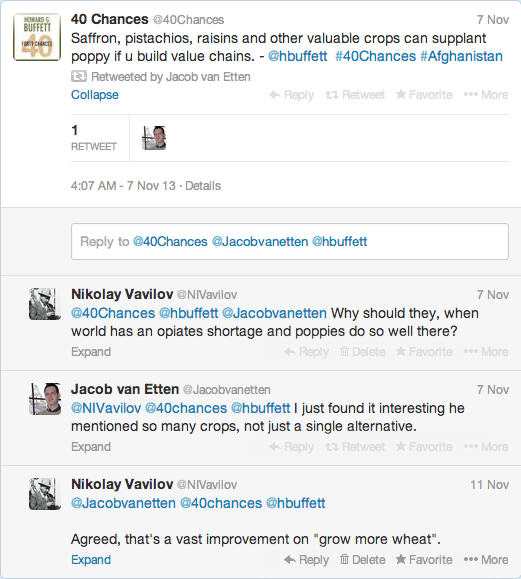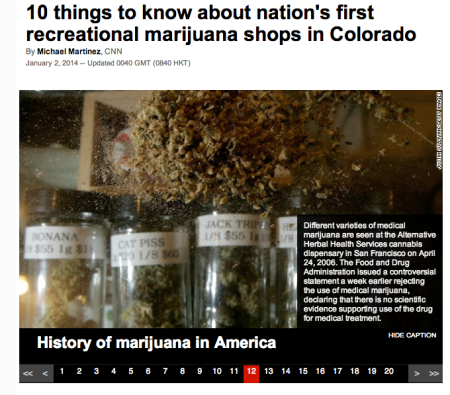- Application of genetic diversity–ecosystem function research to ecological restoration. Cultivars vs local populations vs genetic diversity approaches in restoration reviewed. More research needed, natch, but genetic diversity should not be dismissed out of hand in a bid for rapid establishment or long-term persistence, as it may well be best for ecosystem functioning.
- Application of consensus theory to formalize expert evaluations of plant species distribution models. Given arm-twisting, experts like models.
- Exploring dietary guidelines based on ecological and nutritional values: A comparison of six dietary patterns. The Dutch should eat less meat. No word on beer.
- Market-based mechanisms for biodiversity conservation: a review of existing schemes and an outline for a global mechanism. You can’t monetize what you can’t measure.
- Genomic resources for breeding crops with enhanced abiotic stress tolerance. You still need the phenotyping.
- Perceptual distinctiveness in Native American maize (Zea mays L.) landraces has practical implications. Kernel colour diversity is a marker for other, more interesting, kinds of diversity.
- Can agro-ecosystems efficiently complement protected area networks? Yes, but only in combination with expansion of protected natural habitats. For birds in Israel, that is.
- Indicators for genetic and phenotypic diversity of Dactylis glomerata in Swiss permanent grassland. Management alters both genotype and phenotype.
- A ‘Reality Check’ in the Management of Tree Breeding Programmes. Have come far, but still a ways to go, in particular with regard to the balance between DNA-based vs conventional breeding and genetic gain vs genetic preservation.
- Yield and Economic Performance of Organic and Conventional Cotton-Based Farming Systems — Results from a Field Trial in India. Organic soybean may be a viable long-term option. Cotton and wheat, jury still out. But early days yet, these rotation trials take a long time to get going.
- Long-distance dispersal of the coconut palm by migration within the coral atoll ecosystem. Hugh Harries, one of the authors, in a recent email to us: “Recent reviews have blown dust from old reports of pre-Colombian coconuts in Panama and demonstrated how the rate of germination distinguishes the naturally selected wild coconut from the domestically selected sort. This review formulates a hypothesis which could identify a previously unconsidered route along which the primordial coconut might travel between the South American and Indian tectonic plates without being indigenous on either.” That is, atoll-hopping.
- Differentiation between fiber and drug types of hemp (Cannabis sativa L.) from a collection of wild and domesticated accessions. Must have been fun doing the evaluation.
Dope diversity denied?
There’s one thing I want to know about what’s going to happen now that marijuana has been legalized in a couple of states in the US. And it’s not on CNN’s list. 1 No, not where a visitor can actually smoke the stuff legally, as opposed to just buying it. Or how I can get a job in the industry. What I want to know is what will happen to diversity. There are some indications that legalization may lead to an increase in intellectual property protection over particular strains. I hope someone out there is gathering the baseline data, and saving the seeds, just in case. Not to mention learning lessons that could then be applied to, I dunno, opium in Afghanistan?
Nibbles: Information, Domestication, Cats, Conference, Gunpowder gardening, Policy advice, Potatoes, Ancient vineyards, New UG99, Bovine emissions, Cacao ants, Palaeo-diet, Bloody quinoa, Tokyo’s honey, Urban biodiversity, Ilex, Conifers
- Wow! Just wow. Big Picture Agriculture has launched an incredibly useful website.
- Chromosomes, crops and superdomestication, a slideshare presentation by Pat Heslop-Harrison.
- Cats, domesticated? Not as far as I’m concerned. Still, Ancient Chinese cats ate rats, leading to their domestication.
- Independent plant breeders, a conference just for you.
- Great ammunition for the lazy gardener.
- IBPES told to “tap the wisdom of indigenous peoples”.
- Kenyan policymakers told to consider the potato.
- Basque vineyards of a millennium ago.
- A new strain of UG99 wheat rust? But this time, the world is ready.
- Variable diets linked to variable emissions shock.
- scidev.net reports that ants protect cacao trees from fungal diseases. (Yes, I’m taking short cuts here.)
- Palaeolithic people preferred nutrition-rich places.
- And quinoa remains as confusing as ever.
- Tokyo’s local honey.
- Although agriculture barely features in a paean to urban biodiversity. It should.
- The holly and the coffee: The Botanist in the Kitchen does Yerba Maté
- Ready for the inevitable ennui of next Christmas, a taxonomy of conifers.
Brainfood: Latvian tomato heirlooms, Sinai desert gardens, Orange silkworms, Indian pony breeds, Korean radishes, Anthophagy, Hybrids and diversification, Oregano oils, Chinese peanuts, Ethiopian sorghum, Wild rice crosses
- Latvia’s Tomato Rebellion: Nested Environmental Justice and Returning Eco-Sociality in the Post-Socialist Eu Countryside. The Man tries to enforce the European Common Catalogue, Latvians rebel.
- Traditional agricultural gardens conserve wild plants and functional richness in arid South Sinai. Wild plants survive in gardens, which thus combine diversity and utility.
- Analysis of a silkworm F1 hybrid with yellow cocoon generated by crossing two white-cocoon strains: Further evidences for the roles of Cameo2 and CBP in formation of yellow cocoon. What, are we expected to eat this thing now, what with its high carotenoid content and all?
- Genetic diversity and bottleneck studies in endangered Bhutia and Manipuri pony breeds. Bottleneck? What bottleneck?
- Analysis of the genetic diversity of radish germplasm through SSR markers derived from Chinese cabbage. New Korean radish varieties not same as old Korean radish varieties.
- Ethnobotanical study of anthophagy culture in mountainous area of Wenzhou. It pays to eat flowers.
- Enabling adaptation? Lessons from the new ‘Green Revolution’ in Malawi and Kenya. Adopting hybrids, and thereby escaping the “low maize productivity trap” is no guarantee that your thoughts will turn to crop diversification.
- Phytomorphological and Essential-Oil Characterization in situ and ex situ of Wild Biotypes of Oregano Collected in the Campania Region (Southern Italy). Both nature and nurture play a role. Look for high glandular and stomatal density.
- Diversity characterization and association analysis of agronomic traits in a Chinese peanut (Arachis hypogaea L.) mini-core collection. Can it really be down to just 15 alleles?
- Assessment of molecular diversity and population structure of the Ethiopian sorghum [Sorghum bicolor (L.) Moench] germplasm collection maintained by the USDA–ARS National Plant Germplasm System using SSR markers. High diversity, no structure, much duplication, little passport data.
- Crossability patterns within and among Oryza series Sativae species from Asia and Australia. Some easy, some difficult, all interesting.
Afghan farmers pull off a poppy hat trick
A tweet caught my eye the other week.

40 Chances is the title of a project (and book) by Howard G Buffett, who has taken some interesting approaches to agriculture for development as he spends some of his dad’s money.
I don’t follow 40 chances, but our pal Jacob does. Our conversation is self-explanatory, if a little curt, and although I’m grateful to Jacob for opening my eyes to the point Buffett seems to be making — that there might be several diverse alternatives to poppies — nothing to write here about.
Then, a week later, I see an article in Foreign Policy explaining that Afghanistan’s harvest of opium in 2013 was 49 percent up on 2012. “This is the third consecutive year of increasing cultivation,” according to Jean-Luc Lemahieu, outgoing director of the UN Office on Drugs and Crime, which reported some numbers earlier this week. And the area under cultivation is up 36%.
Ah, the conflicts. Production is up, per hectare, but that’s a bad thing? Because drugs are bad. But only if they’re grown in Afghanistan. Not if they’re grown in Didcot, England, or Tasmania, or France, or Turkey, or India …
I’ve belaboured the point often enough here. There are well-thought out schemes for legalising Afghanistan’s poppy production. And as an aside, the US helped Turkey to transition to legal opiate production by guaranteeing to buy a 80% of its legal opium from India and Turkey.
So, just noting here that in case saffron, pistachios etc don’t work out either, there are alternatives.
